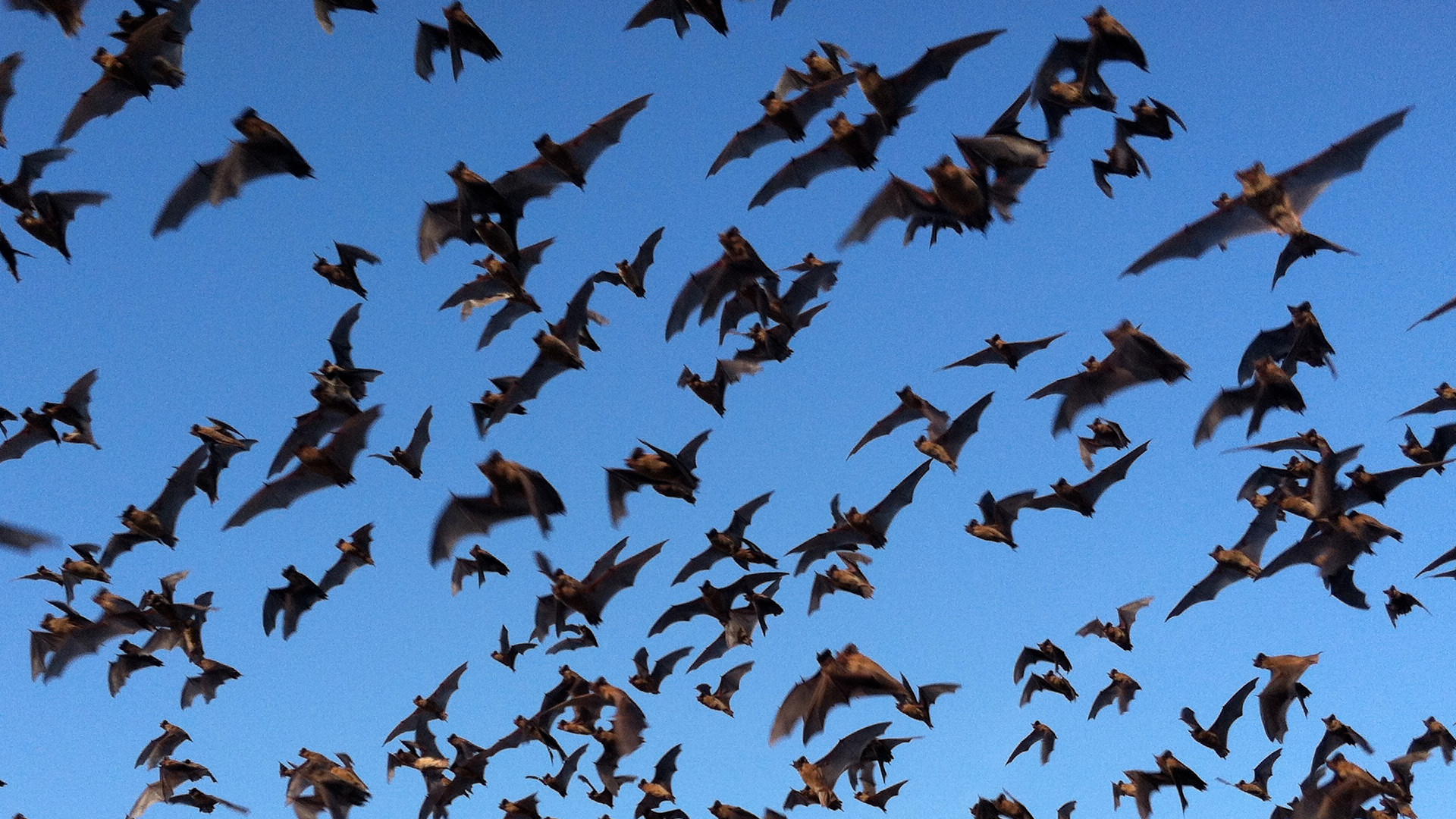Houstonians turned out by the thousands this week to help rescue neighbors who had been displaced or trapped by Hurricane Harvey’s record floods.
Some of those neighbors had wings.
Over the past few days rescuers have saved thousands of Mexican free-tailed bats (Tadaria braziliensis) from Waugh Bridge’s famous colony, which before the storm was home to an estimated 250,000 flying mammals. Dedicated volunteers sometimes hung over the top of the inundated Waugh Bridge to pull bats out of the water in nets.
Additional bats were scooped up into buckets and taken to peoples’ homes to dry off. Others ended up at shelters, working with Bat World Sanctuary, where they received emergency fluids and food before being released.
Some bats didn’t need rescue; they made their way to nearby office buildings and parking garages, where they found shelter from the storm.
Mylea Bayless, senior director of network & partnerships for Bat Conservation International, based in Austin, says they will begin monitoring the Waugh Bridge bat colony after the waters recede. “We are a little bit worried about the impact this flooding is going to have on them, so we’re going to be paying attention to that,” she says.
Mexican free-tailed bats are a populous and wide-ranging species, so even if the colony were devastated it wouldn’t have much impact on the species as a whole. It would, however, be a blow to the local people. “It’s a really visible bat colony,” Bayless says. “People in Houston gather along the banks of the Buffalo Bayou to watch the bats come out from under the bridge. It’s just really become part of the local community to go out and watch these bats. It’s a great educational opportunity.”
Ultimately, Bayless says, she’s relatively optimistic about the colony. “We’re hoping some of the colony crawled out and they’re roosting in these temporary places until the rain and the wind subside and they can go back to roosting under the bridge.”
Other bats, however, may not have been as lucky. The Texas coast is also home to several tree-roosting bat species that could have been harder hit by the hurricane.
“Yellow bats roost underneath palm fronds in the South,” Bayless says. “If those trees get whipped around and as their foliage gets knocked off, those tree-roosting bats are likely to be impacted too. They might end up on the ground or without roosts. That’s a little harder for us to assess because those bats are distributed across the landscape. You can’t just go check all the palm trees to see what bats got knocked out, while you can go to a bridge and see a whole colony. The impact on trees and vegetation is going to be really hard to assess.”
Bayless adds that Harvey’s effect on bats and other wildlife offers an important lesson for the future. “It’s moments like this that should point out how important open spaces are,” she says. “I think about this a lot on the Texas coast, particularly in big cities and where every square foot of land is at a premium. Maintaining those natural open spaces, even in urban environments, it’s not only good for the soul but also those open spaces are the areas that can absorb the rising flood waters. In Houston, the bayous and the parks are safe places for the floods to happen, as opposed to the floods moving up the streets and going into peoples’ houses. It may be an opportunity to call attention to how important it is to protect those open spaces and continue to protect those open spaces for future storms and future situations like this.”
For now, the question remains how many of the Waugh Bridge bats were lost and how that impact will be felt in the near future. Before the disaster the colony consumed an estimated 2.5 tons of insects every night. With mosquito populations anticipated to explode as waters recede, Houston may need every bat it can get.
Previously in The Revelator:


